Small spaces and small gardens call for small trees. Flowering ornamental trees bring color, wildlife, and shade to your yard. Dwarf trees make the best use of limited space. Let’s look at a few dwarf flowering trees you can add to your small yard.
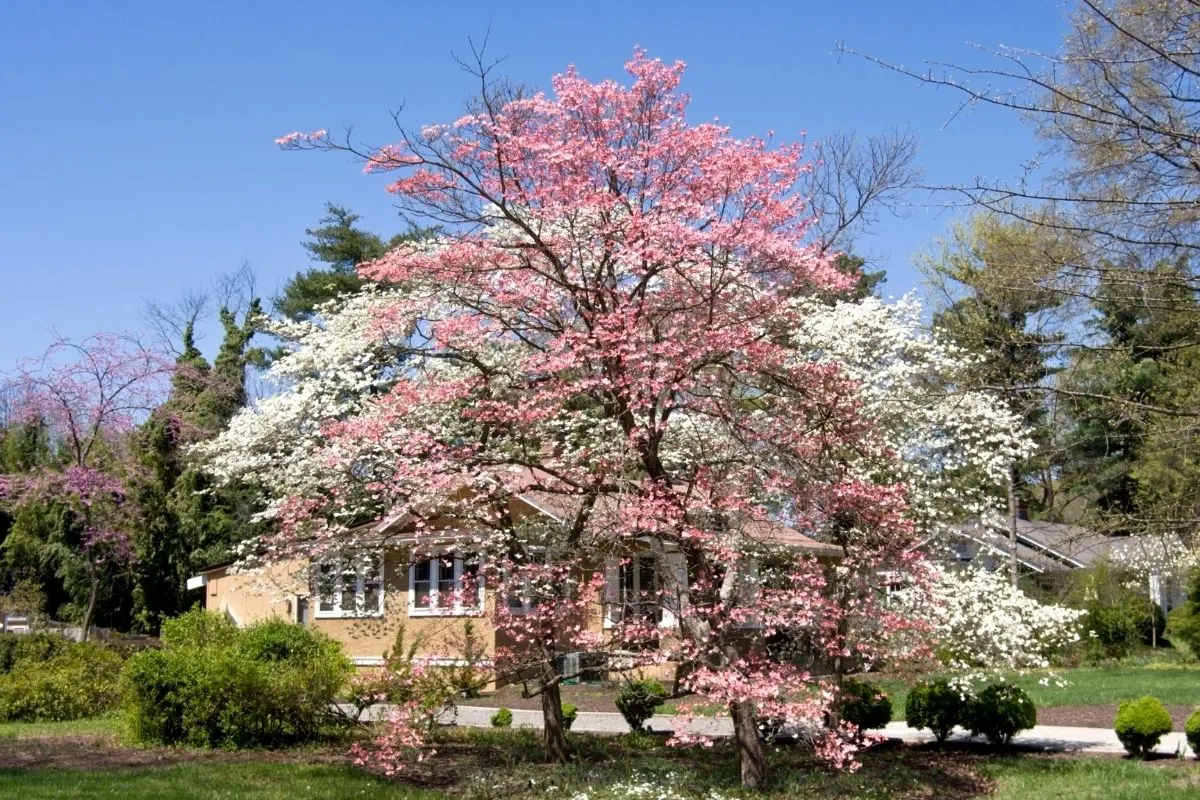
Dwarf Flowering Trees That Add Color To Your Landscape
Let me introduce you to eight flowering trees that stay small or that can be trained to stay small. These trees offer pops of color as understory plants for larger trees or can be grown as specimen plants in front yards and in containers on patios.
They make a great choice for small yards or calm niches in larger landscapes. Not every tree is suitable for every tiny landscape, but you can work with your local nursery to find the varieties best suited for your USDA hardiness zone, soil, and moisture.
1. Crape myrtle, also known as crepe myrtle or crêpr myrtle (Lagerstroemia species)
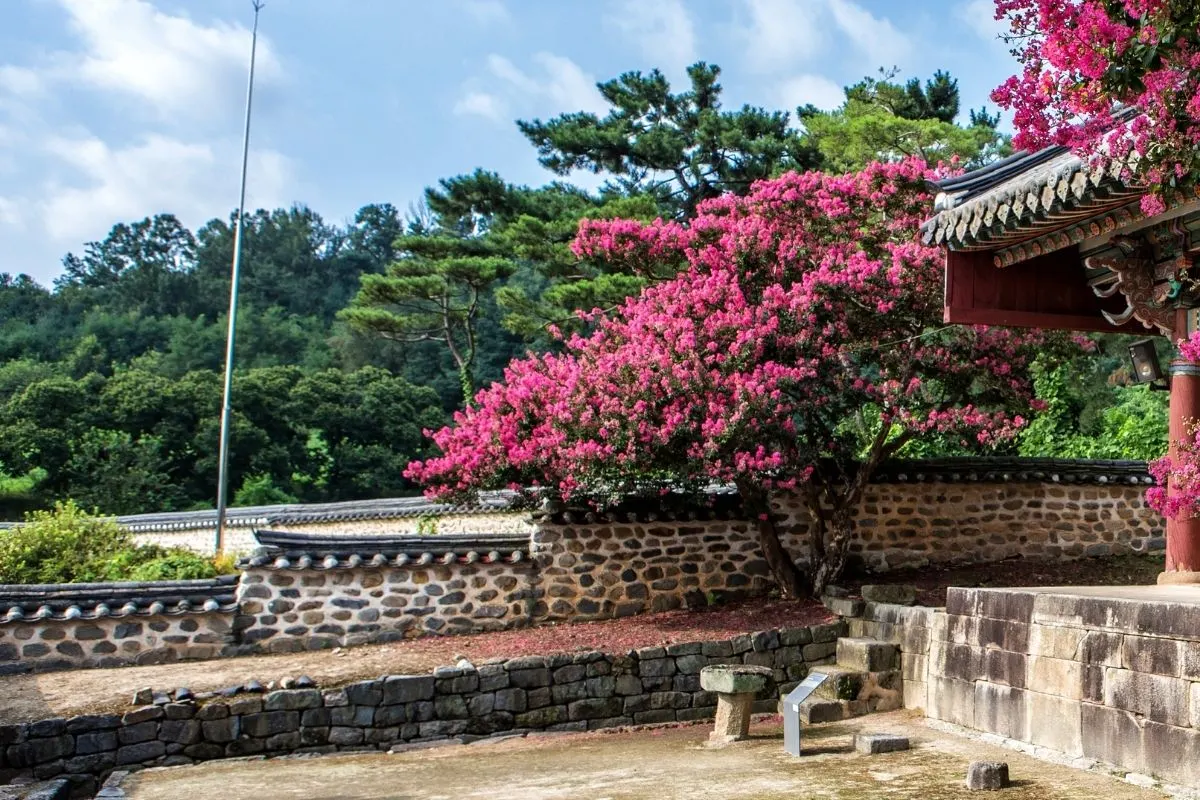
Crape myrtles are a group of about 50 native plants of India that provide reliable, vibrant color all summer long. They are well adapted to hot, dry climates, and they bear panicles of crinkled flowers at the ends of their stems for months at a time, adding red, white, pink, or purple color to the landscape.
Crape myrtles range in height from less than a foot to over 100 feet. They can be grown as specimen plants, in containers, as hedges or screens, or as borders.
Crape myrtles grow dense balls of fibrous roots, so they are relatively safe next to sidewalks and foundations. They do not have to be pruned in the fall to encourage flowering the next spring, although it is true that new growth produces more blooms. Excessive pruning damages the distinctive, peeled bark that makes this deciduous tree so beautiful from late fall to late winter.
Crape myrtles are suitable for hot-summer climates in USDA Hardiness Zones 7 through 9. Even partial shade interferes with blooming. Crape myrtles require full sun.
Check out these favorite crape myrtle shrubs and trees:
- Muskogee Crape Myrtle Tree (Lagerstroemia indica x fauriei ‘Muskogee’)
- GreatMyrtle™ Cotton Candy Crape Myrtle Shrub (Lagerstroemia x ‘Cotton Candy’)
- GreatMyrtle™ Cherry Delight Crape Myrtle Shrub (Lagerstroemia x ‘Cherry Delight’)
- Dynamite Crape Myrtle Tree (Lagerstroemia indica Whit II’ Dynamite’)
2. Downy serviceberry (Amelanchier arborea)
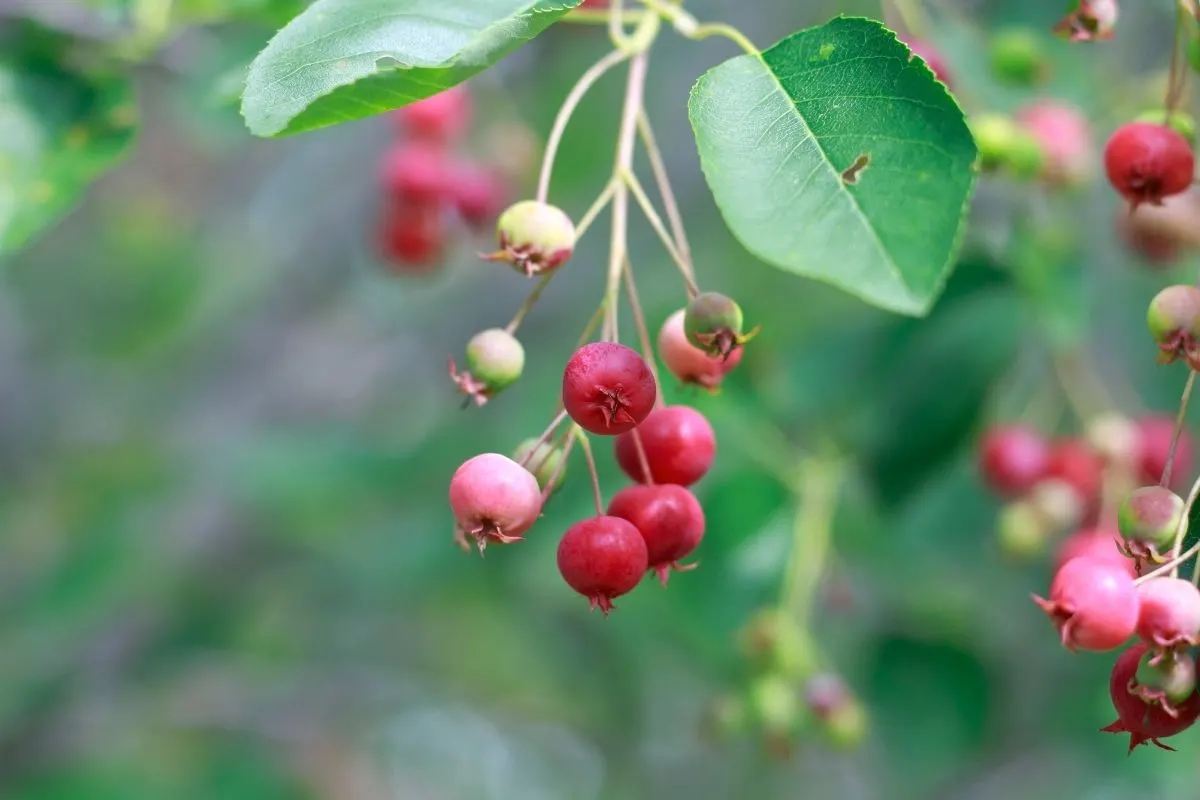
Growing taller than many of the other trees on this list, downy serviceberry is a great choice for all-season beauty. In early spring, the downy serviceberry is covered with beautiful white clusters of blossoms.
In late summer, it is covered with plump, red berries that birds love. Its fall foliage takes on red and golden hues. You can also eat downy serviceberries fresh, or use them in jellies, jams, and pies.
Downy serviceberry can reach a height of 15 to 25 feet. It should not be planted closer than 15 feet to foundations, sidewalks, swimming pools, or fish ponds. Downy serviceberry is suitable for USDA Hardiness Zones 4 through 9.
3. Dwarf citrus trees (Citrus species)
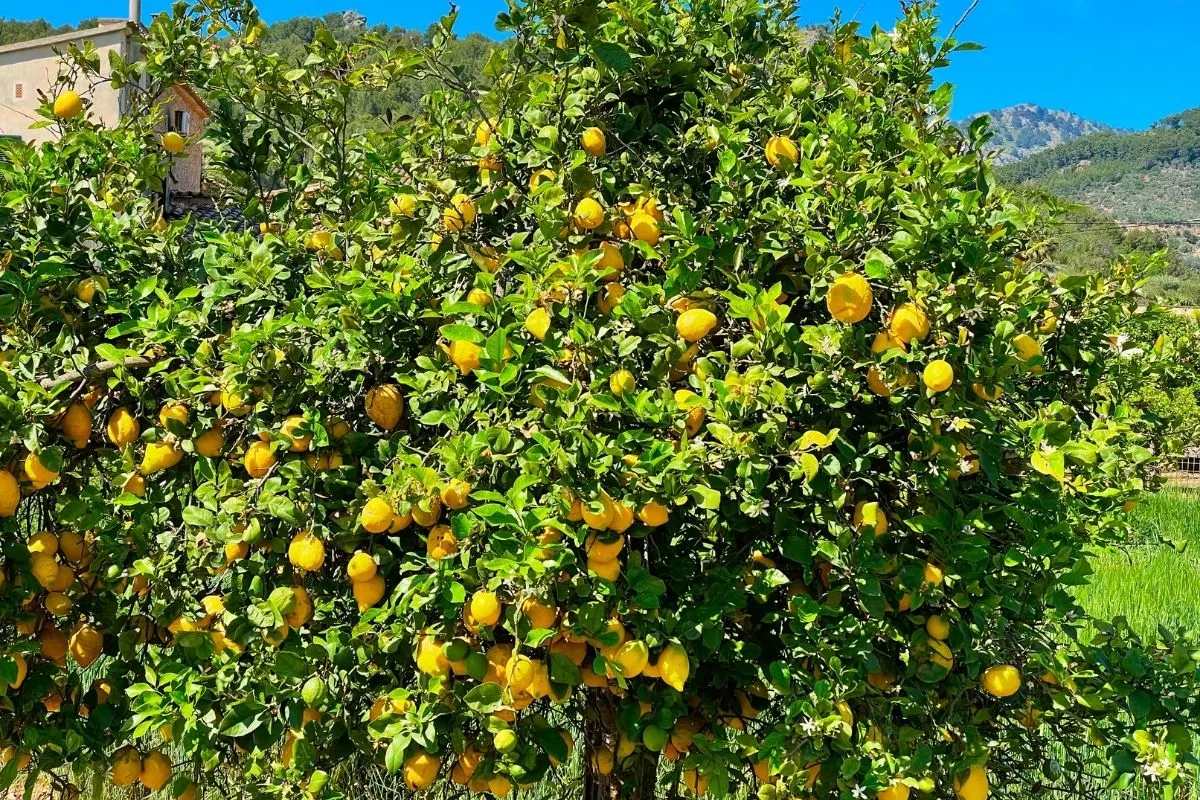
Of all the dwarf flowering trees, dwarf citrus trees are among the most popular worldwide, and there is a lot to love about dwarf flowering citrus. Patio-grown orange and lemon trees provide year-round greenery, wonderfully scented blossoms, and delicious fruit.
With dwarf flowering citrus, there are no limitations of soil and climate to fuss about if you grow them in pots.
Here are the basics for taking care of dwarf citrus trees in containers:
- All citrus trees need bright sun every day. Six hours of sun during the winter is acceptable, but citrus trees need eight hours of sun every day in the summer.
- Fertile soil is also a must for dwarf citrus trees. Never use the soil you dig up in the yard for trees you grow in pots. Always use potting soil amended with compost for fertility and coconut fiber, perlite, or vermiculite for drainage.
- Dwarf citrus trees need a large container (28 inches or larger) to accommodate their root systems. Halves of wine barrels and non-porous ceramic pots work well. Consider how you will move the pot before you plant the tree. The pot must have several holes in the bottom for drainage. Prevent the loss of soil by lining the bottom with lava rocks or small stones before planting the tree.
- It is important to plant your citrus tree at the right depth. The root ball needs to be placed 6 to 8 inches deep in the pot, with all of the roots completely covered. The trunk, however, should not be covered with soil. Pull soil an inch or two away from the trunk and use the indentation for watering.
- Citrus trees need moist soil, but can’t stand flooded or boggy conditions. Container-grown citrus trees are particularly sensitive to standing water.
All citrus trees are sensitive to cold and frost. If you plan to keep your citrus trees outside, you can grow kumquats, Meyer lemons, and sour oranges even in USDA Hardiness Zone 8, although there will eventually be a winter freeze that kills them.
Lemons, oranges, and grapefruit grow best in USDA Hardiness Zones 9 through 11 outdoors. Kumquats are an excellent choice for USDA Hardiness Zone 8.
All citrus plants can be taken indoors to spend the winter in a warm, sunny window. Outdoors, they prefer full sun.
Keep your dwarf citrus to a height of no more than 6 feet, preferably less. Trim any suckers that aren’t bearing leaves.
4. Prairiefire flowering crabapple (Malus ‘Prairifire’)
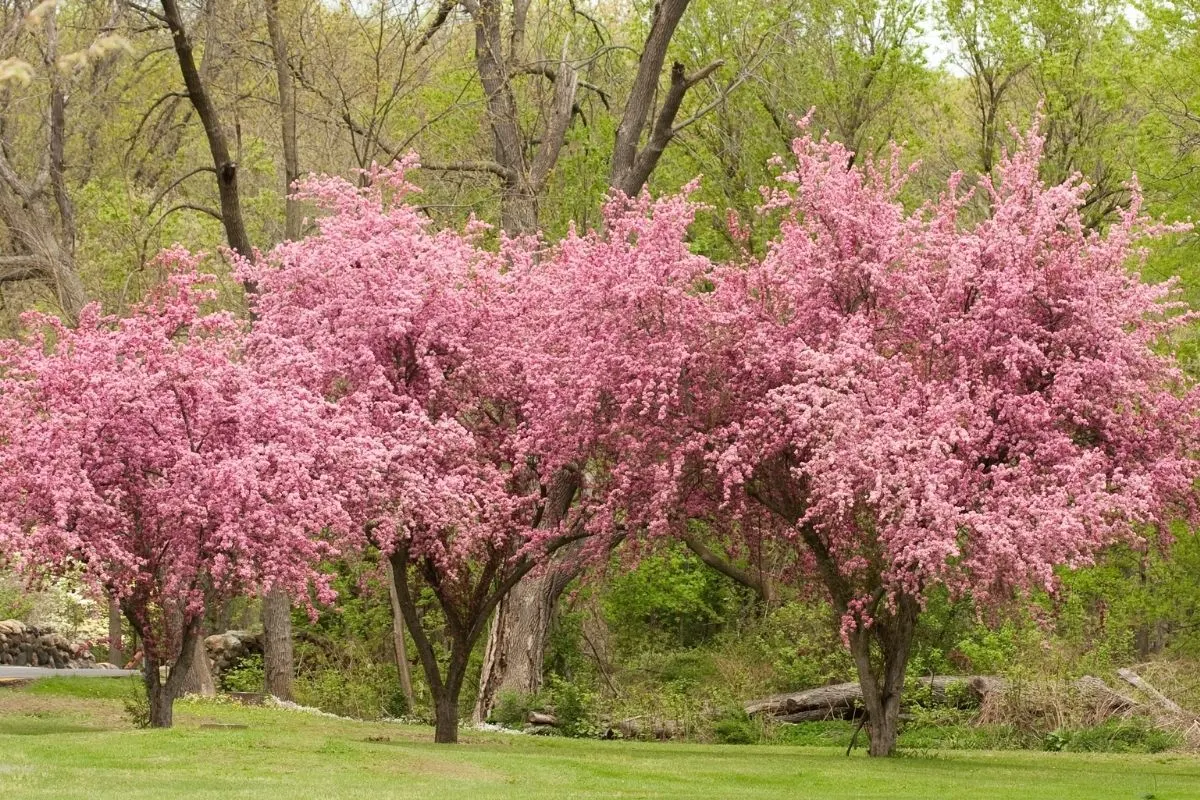
The Prairiefire flowering crabapple is actually an apple tree with some stunning characteristics. It bears dark pink to red blossoms every spring. These flowers stay on the tree for an unusually long time.
Then the plant delights gardeners with its changing display of leaf color: maroon or glossy red in late spring, dark green with reddish-purple veins in the early summer, and bronze in the fall.
Prairiefire flowering crabapple grows out rather than up. Its habit becomes more rounded with age. The small, persistent, dark-red to purple fruit are edible, but you may prefer to leave them on the tree to attract birds and wildlife.
This tree grows up to 20 feet tall, so it is not a good choice under utility lines. Leave 10 feet between the tree and the foundation of your house, sidewalks, or pavement. Prairiefire flowering crabapple is suitable for USDA Hardiness Zones 3 through 8.
5. Purpleleaf sand cherry (Prunus x cisterna tree form)
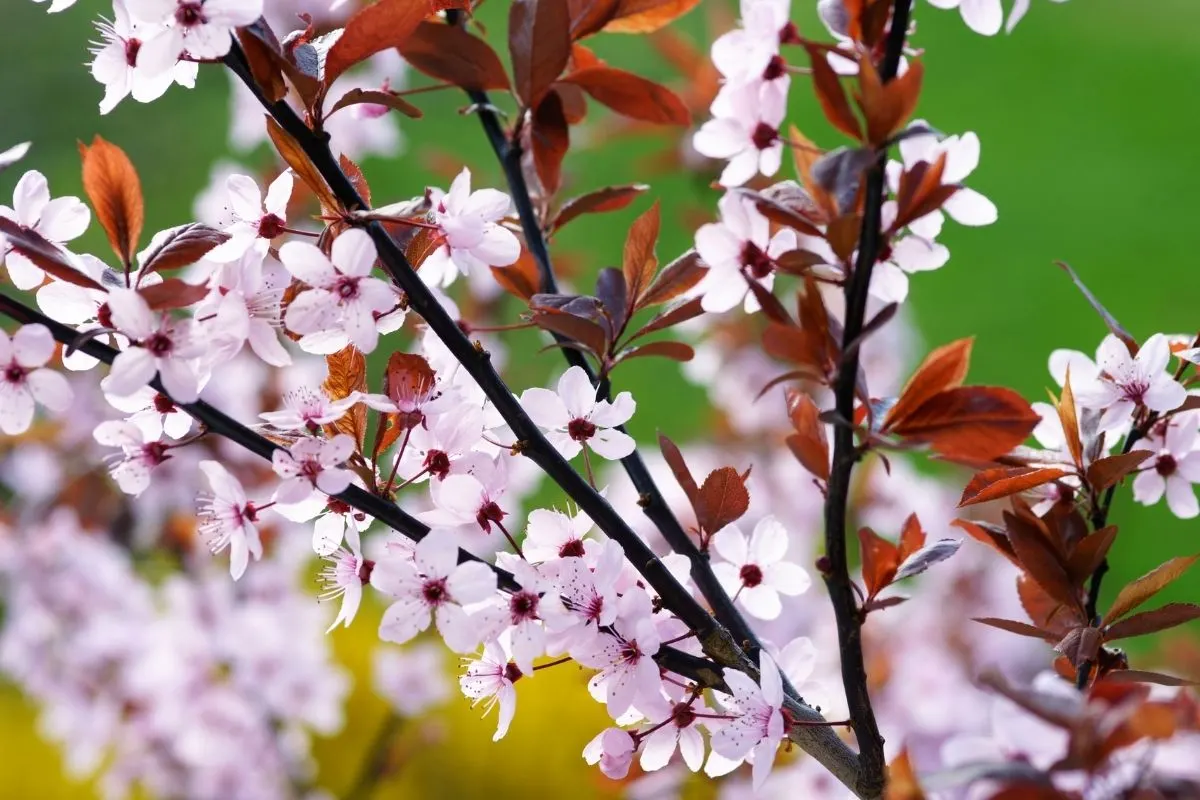
Purpleleaf sand cherry is a very hardy, compact flowering tree that bursts out with pinkish-white blossoms in early spring and bears distinctly purple foliage all summer. It grows low enough that it is safe under power lines and its roots are safe near sidewalks or pavement.
This unique small flowering tree is the result of a cross between Prunus ceracifera, also known as the sand plum or myrobalan plum, and Prunus pumila, also known as sand cherry. Depending on the length and warmth of summers where it is grown, it may mature into a leggy bush or a small tree.
The fruits of the purpleleaf sand cherry are extremely tart but edible. The tree lives 15 to 20 years, reaching its full height at about 5 feet in short-summer climates, and growing to 8 feet tall in warmer summer areas.
The pureleafed sand cherries you find in nurseries are grafted to specific rootstocks that determine their final height. This tree is cold-hardy in USDA Hardiness Zone 2 but is unlikely to survive summers in USDA Hardiness Zones 8 through 12.
6. Red dogwood (Cornus florida var. rubra)
Red dogwoods fill the role of a dwarf tree for 10 to 15 years after they are planted. Especially in locations that have cooler summers, they aren’t able to harden off new growth that would enable them to reach their full potential height of 30 to 40 feet.
Instead, red dogwood trees are slow growers. They remain 10 to 15 feet tall, gradually spreading out instead of growing up. This tree also stays relatively small in the dryer and hotter reaches of its natural range, such as East Texas and Oklahoma.
Red dogwood pops out in red blossoms in early spring. Its leaves are reddish-purple throughout the summer, and it is covered with glossy red fruit in the fall and early winter.
The fruit attracts birds and squirrels. This tree is safe around power lines and does not have a root system that disturbs nearby concrete. But it can be fussy about summer heat and drought. Red dogwood thrives in humid summers but is set back by drought.
Red dogwoods make a wonderful companion plant for Japanese maples, redbuds (Cercis canadensis), or chaste trees.
Use red dogwood as an understory tree in the small places left in a stand of evergreens. Red dogwood is suitable in humid locations in USDA Hardiness Zones 5 to 9.
7. Star magnolia (Magnolia stellate)
Star magnolia is an extraordinarily versatile small flowering tree. It can adapt to soils and climates all over the continental United States, and it is useful in foundation plantings as well as a stand-alone specimen tree. This import from Japan is closely related to the Kobushi magnolia, but it is recognized as a distinct species.
Star magnolias begin to bloom just a few years after they are planted. The slightly fragrant white or pink flowers cover the bare tree in early spring. Each star-shaped flower consists of 12 to 30 tepals (similar to petals). The color of the flowers changes every year from white to dark pink as the plant responds to day and night temperatures while it is flowering.
The leaves of the star magnolia are bronze-green when they open. They mature to dark green and then turn yellow before they fall at the end of the growing season. This magnolia bears reddish-green, knobby fruit that opens slits that display red seeds inside.
Young star magnolias have brown, shiny bark. As the plant matures, its bark turns silvery gray.
The secret to successfully growing a star magnolia is to plant it where it is shielded from foot traffic, pets that like to dig, and children at play. The roots of this plant are close to the surface and do not tolerate disturbance. Star magnolia grows 15 to 20 feet tall and is suitable for USDA Hardiness Zones 4 through 9.
8. Smoketree, also known as smokebush (Cotinus spp.)
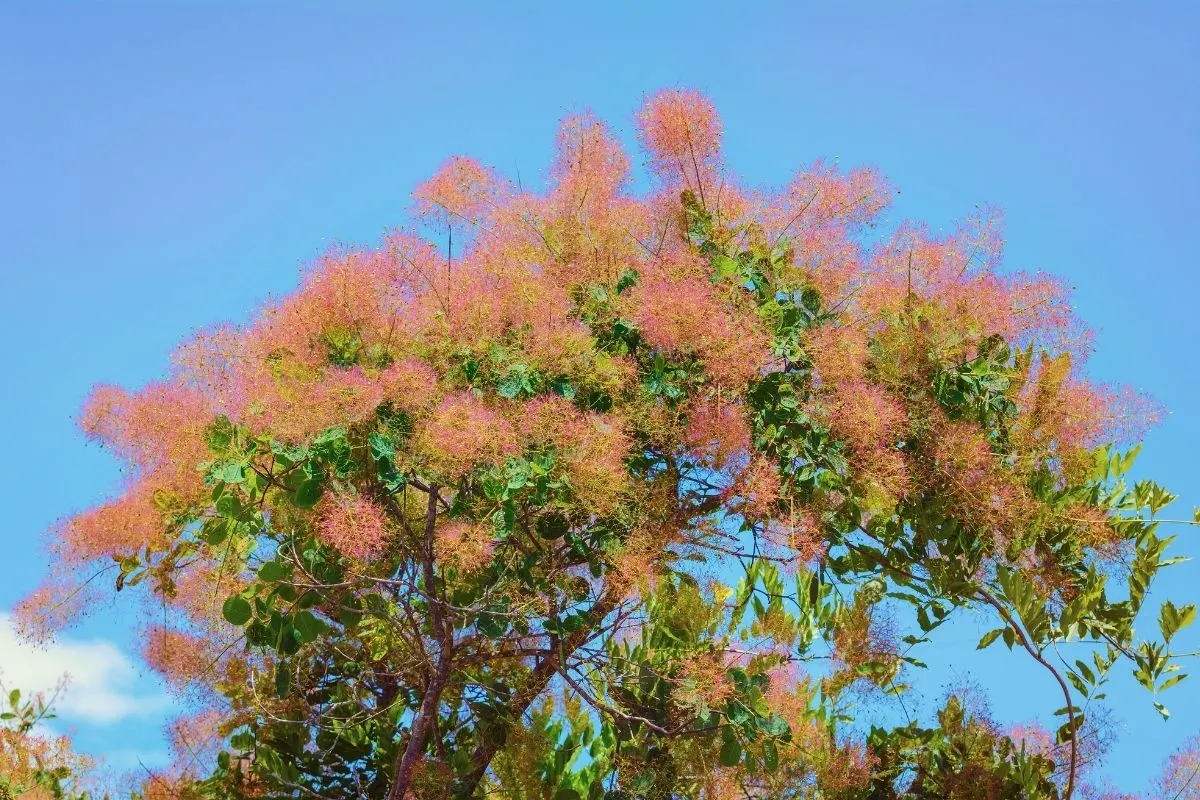
Smoketree is actually a group of seven closely related trees that blooms wispy filaments that from a distance look like puffs of smoke: cream, and pink puffs of smoke. It can flourish as a multi-stemmed bush, be trained as a single-trunked tree, or trimmed back every year to the size of a large shrub.
Like the sumacs to which these trees are related, smoketrees bear brilliant wine-red foliage in the fall (check out this purple smoke tree for some beautiful foliage and blooms!)
Smoke trees are more colorful when they are grown in dry, shallow, unfertilized soil. When they are grown in fertile soil, they tend to die from verticillium wilt. Garden centers may have several varieties of this tree, some with warm pink flowers and others with dark purple leaves.
Smoketrees can be pruned to stay just 5 feet tall, but they naturally grow to a height of 10 to 15 feet. This tree grows best in drier climates in USDA Hardiness Zones 5 through 8.
More small trees you might like
The above is just a tiny list of trees for small landscapes, but there are many more options. From trees with beautiful large white flowers (or pink and purple flowers) to trees that have dark green foliage to dwarf varieties with intoxicatingly fragrant flowers, there’s a tree that’s perfect for your small garden.
Here are just a few more ideas:
- Carolina silverbell
- Eastern redbud trees (this lavender twist redbud is absolutely STUNNING!)
- Japanese cherry trees
- plum trees
- snow fountains weeping cherry trees
- mimosa trees (albizia julibrissin): be careful though, as these can be invasive in certain parts of the country
- hinoki cypress
- dwarf fruit trees
- Japanese tree lilac
I hope our list of dwarf flowering trees has inspired you and you now have a good idea of which tree (or trees) would beautify your small yard.
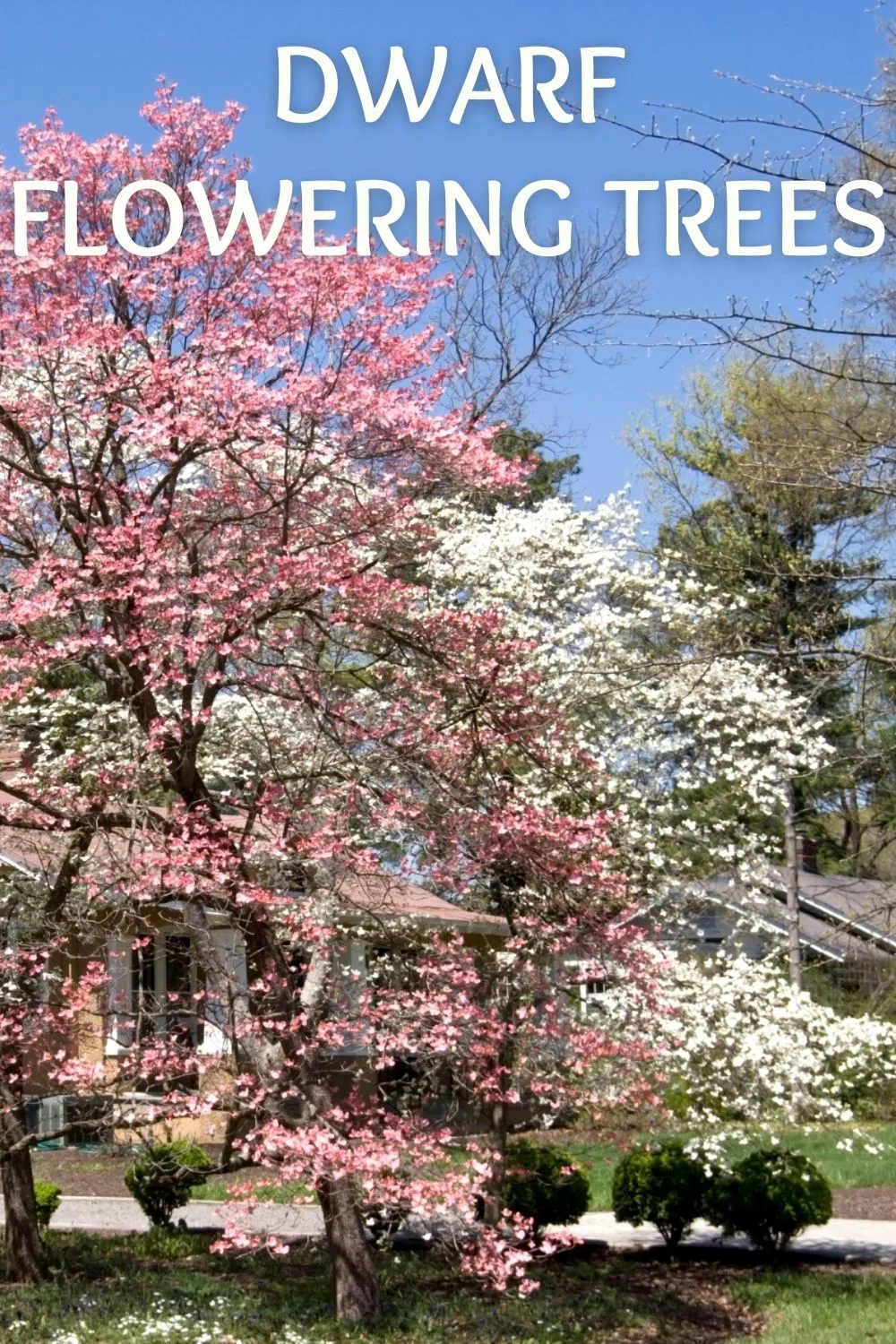




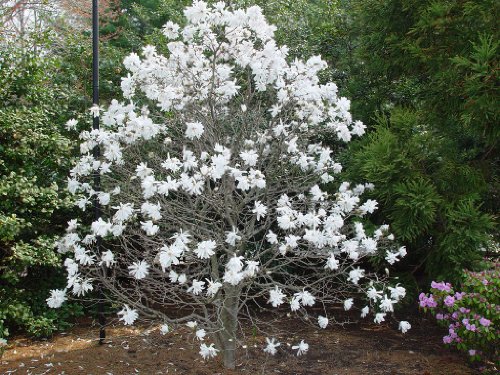
10 Types Of Flowering Trees For A Beautiful Yard
Wednesday 20th of April 2022
[…] or do you need something interesting for a smaller garden space in a larger landscape? Consider dwarf and small flowering trees such as container citrus trees for their wonderfully scented blossoms and for their edible […]